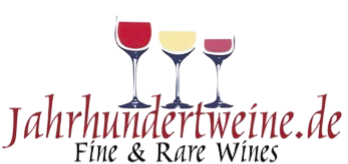Carruades de Lafite 'Château Lafite Rothschild' 1951
€595.00*
1 Available immediately
Filling level upper shoulder, capsule good and label heavily damaged.
Product information
Carruades de Lafite (Château Lafite Rothschild) 1951
Classification: Second wine of Château Lafite Rothschild (Premier Grand Cru Classé)
Vintage: 1951
Appellation: Pauillac, Bordeaux
Grape varieties: Typical for Lafite: high proportion of Cabernet Sauvignon, supplemented by Merlot, Cabernet Franc and Petit Verdot (exact percentage breakdown from this period often no longer available).
Vintage rating: A mediocre vintage characterised by challenges.
1 Introduction and historical context
The 1951vintage in Bordeaux was not an easy one. It followed the legendary vintages of 1945, 1947 and 1949 and was characterised by a cool and wet summer, which necessitated an early harvest. The wines were generally rather light and intended for a medium to short ageing period.
Carruades de Lafiteis the second vineyard of the famous Château Lafite Rothschild. The wines of Carruades de Lafite were traditionally made from younger vines and from sites outside the heart of the Grand Vin. A wine from 1951 is now an extreme rarity and less a wine to be savoured than a historical document and an object for connoisseurs and collectors.
2. sensory description (expectation based on vintage and age)
After more than 70 years, each bottle is unique and its condition depends entirely on its provenance and storage. A perfectly stored bottle may still be amazingly vibrant, while an averagely stored bottle is most likely well past its peak.
The profile of an intact bottle might look like this:
Colour:Very light, translucent brick red with a broad, orange rim ("pelure d'oignon"). The colour shows strong signs of maturity.
Nose (aroma): The nose is the main indicator of the quality of the preserved state. Tertiary aromas are expected to dominate:
Tobacco, damp earth, cedar wood, mushrooms and a hint of truffle.
Delicate notes of dried cranberries, cherry stones and old leather.
When the bottles are still alive: a classic, subtle Lafite scent of pencil lead (graphite).
The fruit has completely disappeared, replaced by a complex spiciness.
Palate (flavour): The wine is certainly fully mature and probably very light on the palate.
The tannins have completely disintegrated and integrated after such a long time, givinga silky, almost fragile texture.
The body is lean and elegant, not powerful.
Acidity is the key: if it is still present, it gives the wine a final vibrancy and length. If it is slack, the wine appears flat and tired.
The finish is short to medium in length and dominated by the earthy, spicy notes of the nose.
3 Current condition and drinking maturity
Condition: A wine from 1951 is beyond its actual drinking maturity. Opening such a bottle is an experiment.
Drinking window:This wine should probably have been drunk at its peak in the 1970s or early 1980s. Today it is a pure experience for historic wines.
Survivability: Only bottles that have been stored their entire life in a perfect wine cellar(constant 12-13°C, 70-80% humidity, dark and vibration-free) have a chance of still offering an appealing flavour profile. All others are most likely overripe, oxidised or "dead".
4. serving recommendation
Opening such a bottle requires special care:
Let it stand: Allow the bottle to absolutely rest for at least 24-48 hours before opening to preserve the sediment.
Open carefully: The cork is extremely fragile. An awl or Butlers Friend (two-point lifter) is essential.
Careful decanting: Only to separate the sediment, not to aerate. The wine is extremely fragile. Any contact with oxygen can destroy the last remaining flavours in minutes. It should be tasted immediately after decanting.
Temperature: Around 16-17°C.
Accompaniment: Taste neat so as not to spoil the historical experience.
5. rating and market situation
Rating: There are no current Parker or Suckling ratings for this wine. Historically, 1951 was considered to be a vintage of 78-82 points in modern evaluation - i.e. average and without great potential for extreme longevity.
Market price: The price is determined almost exclusively by rarity and collector's value, not by potential drinking quality. A bottle of impeccable provenance (e.g. from a renowned private collection with a complete history) can still achieve500 - 1,000 euros or moredue to its rarity . A bottle of unknown provenance can hardly be estimated in terms of value and is a great risk.
6. conclusion
The Carruades de Lafite 1951 is not a wine for classic enjoyment, to be opened for a special evening. It is a piece of contemporary history, a relic from another era of winemaking.
Opening such a bottle is a journey into the past, an academic and emotional experience. The outcome is uncertain - it can be a poignant, delicate and complex moment that hints at the elegance of Lafite, or a disappointing encounter with a wine that has outlived its time.
Every intact bottle is a miracle of ageing and deserves the greatest respect, regardless of the sensory result.

|
Alcohol: | 14 |
|---|---|---|

|
Colour: | red |

|
Country: | France |

|
Filling quantity: | 750 ml |

|
Flavour: | dry |

|
Grape variety: | Cabernet Sauvignon, Merlot, Cabernet Franc, Petit Verdot |

|
Product type: | Wine |

|
Region: | Bordeaux |

|
Type of wine: | Red wine |

|
Vintage: | 1951 |

|
Producer: | Château Lafite Rothschild |
Log in
Allergens: Sulphites
Bottler: Producer












